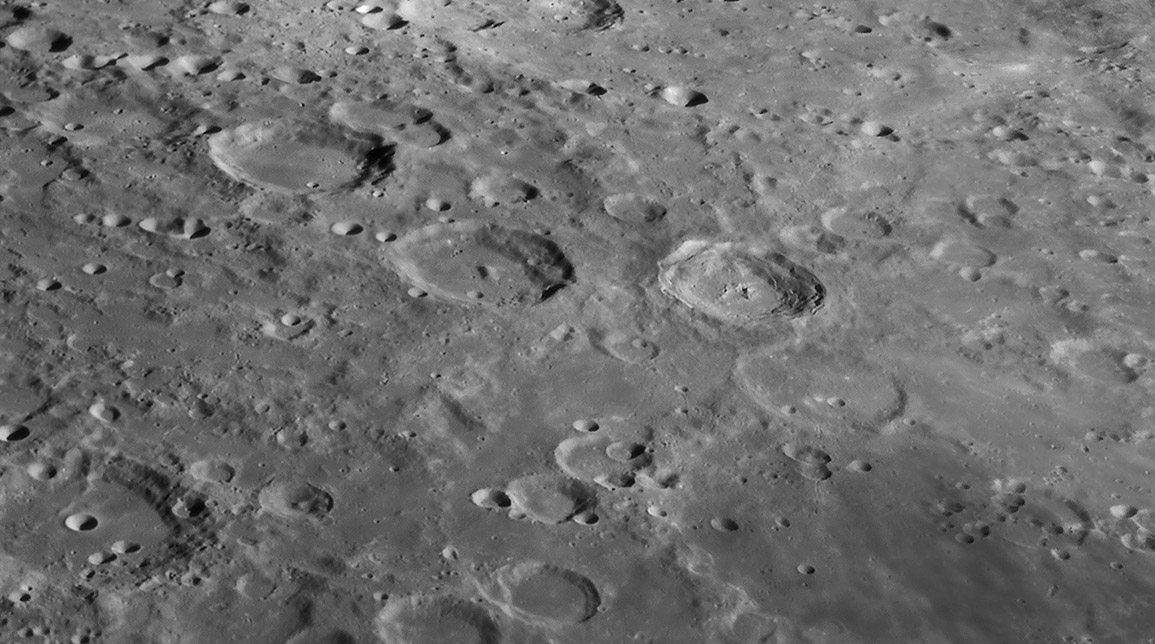Difference between revisions of "September 7, 2009"
| Line 3: | Line 3: | ||
<!-- ws:start:WikiTextHeadingRule:0:<h1> --> | <!-- ws:start:WikiTextHeadingRule:0:<h1> --> | ||
<!-- ws:start:WikiTextLocalImageRule:14:<img src="/file/view/LPOD-Sept7-09.jpg/87433101/LPOD-Sept7-09.jpg" alt="" title="" /> -->[[File:LPOD-Sept7-09.jpg|LPOD-Sept7-09.jpg]]<!-- ws:end:WikiTextLocalImageRule:14 --><br /> | <!-- ws:start:WikiTextLocalImageRule:14:<img src="/file/view/LPOD-Sept7-09.jpg/87433101/LPOD-Sept7-09.jpg" alt="" title="" /> -->[[File:LPOD-Sept7-09.jpg|LPOD-Sept7-09.jpg]]<!-- ws:end:WikiTextLocalImageRule:14 --><br /> | ||
| − | <em>image by [mailto:slamm@blueyonder.co.uk | + | <em>image by [mailto:slamm@blueyonder.co.uk Stefan Lammel]</em><br /> |
<br /> | <br /> | ||
| − | [http://www.lpod.org/?m=20060401 | + | [http://www.lpod.org/?m=20060401 Previously], I've [http://www.lpod.org/?m=20071229 described] the erosional modification sequence for the four nearly equal size craters seen here. Zucchius (D = 64 km) at right with crisp rim, rumpled terraces and a nice central peak on a flat floor is youngest, and passing Bettinus and Kircher, we come to the oldest, Wilson, with its totally smoothed rim and featureless interior. This time I want to add a fifth to the foursome by noting that Segner, just to the right of Zuuchius has a similar diameter (67 km) but has suffered a different type of alternation. Segner's rim is somewhat smoothed but the interior has been nearly completely filled in and later striated with [http://the-moon.wikispaces.com/Segner ejecta] from Zucchius. (Notice the secondary crater chain that went towards the limb.) What filled Segner is indicated by its location. Do you notice that Segner lies between the rings of the [http://the-moon.wikispaces.com/Schiller-Zucchius+Basin Schiller-Zucchius Basin]? Dark halo craters prove that the smooth material within the SZ basin is basalt, so it is likely that Segner was also flooded by basalt that has been lightened and roughen by debris from Zucchius. The unexpected treat in this image is Scheiner B, which looks like a miniature [http://the-moon.wikispaces.com/Capella Capella] with walls that slope all the way to the central peaks without much of a floor.<br /> |
<br /> | <br /> | ||
| − | <em>[mailto:tychocrater@yahoo.com | + | <em>[mailto:tychocrater@yahoo.com Chuck Wood]</em><br /> |
| − | <div>You can support LPOD when you buy any book from Amazon thru [http://www.lpod.org/?page_id=591 | + | <div>You can support LPOD when you buy any book from Amazon thru [http://www.lpod.org/?page_id=591 LPOD!]<br /> |
</div> | </div> | ||
---- | ---- | ||
===COMMENTS?=== | ===COMMENTS?=== | ||
| − | + | Register, and click on the <b>Discussion</b> tab at the top of the page. | |
Revision as of 19:02, 17 January 2015
Five in a Row (And an Extra Treat)

image by Stefan Lammel
Previously, I've described the erosional modification sequence for the four nearly equal size craters seen here. Zucchius (D = 64 km) at right with crisp rim, rumpled terraces and a nice central peak on a flat floor is youngest, and passing Bettinus and Kircher, we come to the oldest, Wilson, with its totally smoothed rim and featureless interior. This time I want to add a fifth to the foursome by noting that Segner, just to the right of Zuuchius has a similar diameter (67 km) but has suffered a different type of alternation. Segner's rim is somewhat smoothed but the interior has been nearly completely filled in and later striated with ejecta from Zucchius. (Notice the secondary crater chain that went towards the limb.) What filled Segner is indicated by its location. Do you notice that Segner lies between the rings of the Schiller-Zucchius Basin? Dark halo craters prove that the smooth material within the SZ basin is basalt, so it is likely that Segner was also flooded by basalt that has been lightened and roughen by debris from Zucchius. The unexpected treat in this image is Scheiner B, which looks like a miniature Capella with walls that slope all the way to the central peaks without much of a floor.
Chuck Wood
COMMENTS?
Register, and click on the Discussion tab at the top of the page.



